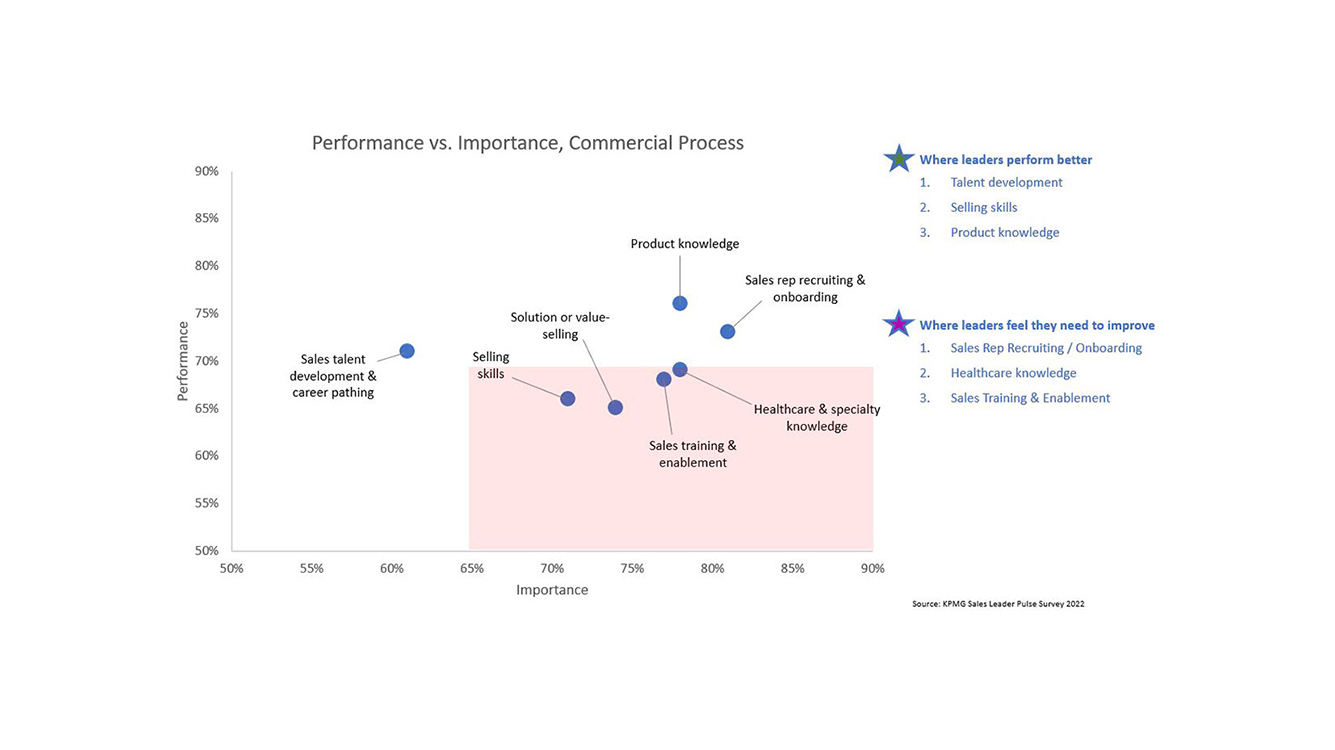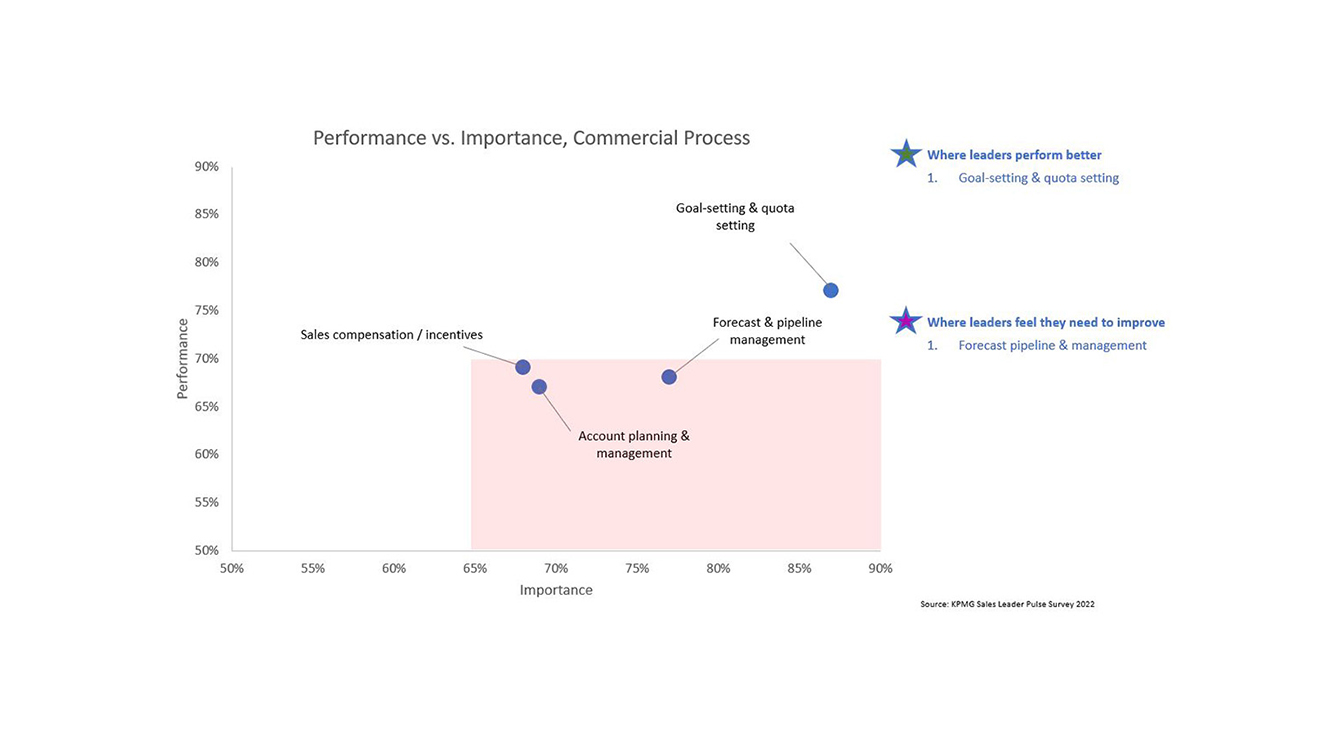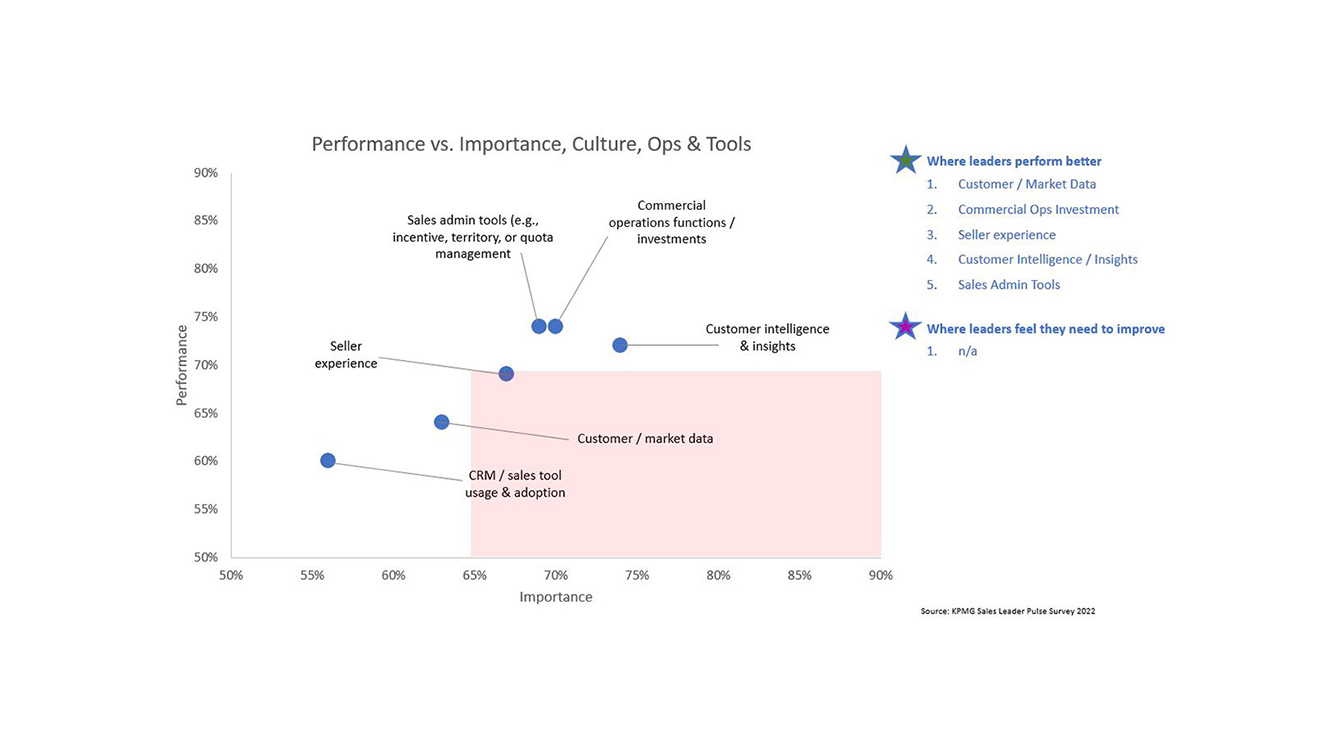The key levers for ROI and revenue growth
Insights from recent KPMG life science sales leader research

As we move firmly into the 'new normal,' post-COVID, life science companies face big decisions on how to adapt to the evolving healthcare ecosystem. The organizations that will emerge strongest will be those who fully re-evaluate their entire front office strategy, structure, management, and technology stack in light of changed customer expectations.
To understand the impact and aftereffects of COVID on life sciences sales organizations and front office functions more broadly, KPMG conducted a pulse survey in 2022 of 100 industry commercial and sales leaders responsible for driving revenue growth. Respondents were split evenly between biotech and pharma, health IT, and medical devices, with the research gauging their experiences in three key areas:
- What investments, during and post-COVID, do they believe will have the most beneficial impact on their organization
- What healthcare trends are impacting sales organizations the most
- What key levers are driving ROI and revenue growth
In this third in a series of blogs exploring the survey findings, I concentrate on the final point above, specifically:
- How high-quality data and investment in commercial operations headcount is leading to deeper customer insight and lower cost of sales
- What do the most successful sales leaders do to manage their sales model
- How performance management is equipping leading sales organizations for further success
- Which commercial operations functions do leaders choose, and how do they enable their teams
Leading sales organizations invest in commercial operations capabilities
Leaders drive talent programs
Leading organizations understand that a fundamental success factor for growth is a highly functioning and knowledgeable sales team.
The most successful sales leaders outperform their competition by driving the development of their talent, with a focus on producing superior selling skills and better product knowledge within their teams.
This commitment to sales excellence also means that leading organizations clearly understand those areas in which they need to improve, with leaders striving to get even better at sales rep recruiting and onboarding, healthcare-specific knowledge, and sales training and enablement.

Performance, Performance, Performance
While leaders fully understand the importance of these levers for success, they recognize the need for further improvement in their performance in these areas and their related activities.
This focus on performance management was also seen as crucial for leading organizations (87%), particularly in the area of goal and quota setting, with leaders believing they are performing strongly (78%) in this area. As post-COVID times have brought changes in patient and procedure volumes, however, it is vitally important that goals, quotas, and metrics are recalibrated accordingly.
As they strive to improve their overall performance on an ongoing basis, leaders are aware of their need to improve their forecasting and management of their pipelines.

Culture is king: Align with tools and commercial ops to back it up
Corroborating the findings from my second blog in this series, a significant majority of organizations (74%) believe that the most important operational function for sales success is strong customer intelligence and insight.
This is closely followed by providing their sales teams with the right tools (incentives, territories, quota management) to deliver on customer requirements and ensuring that commercial operations functions and investments align with this strategy.
Getting these levers right is crucial — leaders perform better than their competition in all of these areas, as well as with regard to market data and the seller experience.

Implications
In an evolving healthcare landscape, with reduced patient and procedure volumes and increased challenges from competition, those organizations who are leading the way understand the power of using high-quality data—and the deep insight it provides to inform their sales strategies.
Leaders are using this insight to segment their customers and truly understand their requirements. They are driving talent programs to develop hugely knowledgeable and capable sales teams who can provide their customers with what they need—and they are equipping them with the right tools to deliver on those requirements while ensuring that the commercial strategy aligns with and enables these efforts.
Overarching all of this is a resolute focus on ensuring that performance is constantly monitored, analyzed, and improved. They are utilizing their insights to continually drive better performance overall and—crucially—to identify and correct those areas where they need to get better.
While leading organizations following this strategy will set themselves up for increased success, those who are not so focused in these areas will increasingly be left behind.
Recommendations
1
2
3
4
KPMG can help you improve the ROI on your sales investments – enabling you to effectively manage winning sales strategies, processes, and talent with connected insights.
Meet our team

